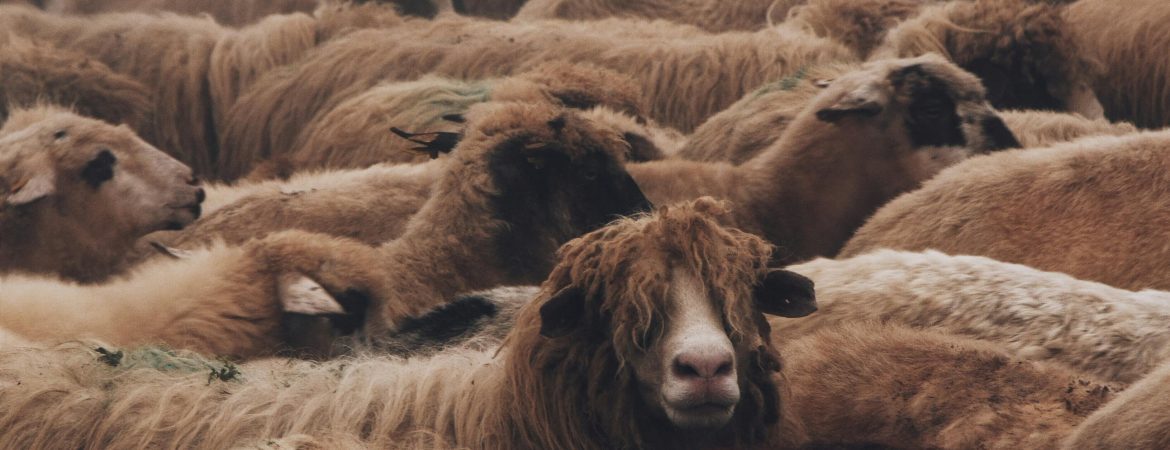
Methane (CO2-eq) Emissions and Virgin Wool: This Is the Impact Sheep Have on the Environment
Why Methane Is a Key CO2 Equivalent
When discussing greenhouse gases and their impact on climate change, most people think of carbon dioxide (CO2). However, there are other gases that are far more potent in their ability to trap heat in the atmosphere. Methane (CH4) is one of these gases and is significantly more harmful than CO2 in terms of global warming potential. While methane has a shorter lifespan in the atmosphere, it is many times more powerful than CO2 in the short term, making it a crucial target for reduction efforts.
Virgin Wool and Methane Emissions
Virgin wool refers to wool that comes from sheep that are being sheared for the first time. Virgin wool contributes to significant methane emissions. Sheep are ruminants, and their digestive process produces large amounts of methane, released through burping and flatulence. This means that the production of virgin wool is associated with high methane emissions, considerably increasing the environmental impact of this industry. The amount of methane produced by sheep makes virgin wool a resource-intensive product—especially when compared to recycled materials or alternative fibers.
The CO2 Equivalent of Methane
When comparing methane to CO2, we often use CO2 equivalents (CO2-eq). This is a way to compare the impact of different greenhouse gases by measuring their global warming potential over a certain period. Methane has a much higher CO2 equivalence than CO2. Over a 20-year period, methane can be up to 84 times more powerful at trapping heat than CO2. This means that even small amounts of methane can have a significant impact on global warming.
The Sustainability Impact of Virgin Wool
The high methane output associated with virgin wool makes its production less sustainable than many other textiles. Methane emissions contribute directly to the global climate crisis, and reducing these emissions is essential to achieving climate targets. That’s why using alternative materials or recycled fabrics—like those from Fabraa—can help reduce CO2-eq emissions.
Recycled Wool as a More Sustainable Alternative
One way to reduce methane emissions in the textile industry is by using recycled wool instead of virgin wool. Recycled wool is made from existing wool products that are reused and processed into new fabrics. Since this process doesn’t require raising new sheep, it cuts down on the methane emissions linked to sheep farming for wool. This makes recycled wool a much more sustainable alternative to virgin wool.
Benefits of Recycled Wool in Textile Production
Beyond reducing methane emissions, recycled wool offers additional benefits. First, it decreases the need for new raw materials, easing the pressure on natural resources. Second, it reduces the amount of textile waste going to landfills, as old garments and fabrics are repurposed. Moreover, by lowering the number of sheep needed for wool production, it significantly reduces greenhouse gas emissions, including methane.
Fabraa’s Vision for Sustainability
At Fabraa, sustainability is at the core of everything we do. That’s why we use recycled fabrics. By incorporating recycled wool instead of virgin wool, Fabraa lowers CO2 equivalents and contributes to a cleaner planet. Fabraa’s fabrics—such as Facet and Forward—are made from recycled wool and other sustainable materials, making them more environmentally friendly than products that rely on virgin wool.
Methane and Virgin Wool in Perspective
The issue of methane emissions in the textile industry cannot be underestimated. The production of virgin wool contributes significantly to methane output, which worsens the climate crisis. By switching to sustainable alternatives like recycled wool, companies and consumers can help reduce their environmental impact. Fabraa’s commitment to using recycled fabrics is a step in the right direction to cut down CO2-eq emissions and make the textile industry more sustainable. Choosing recycled wool helps mitigate the harmful effects of methane and contributes to a greener future for our planet.